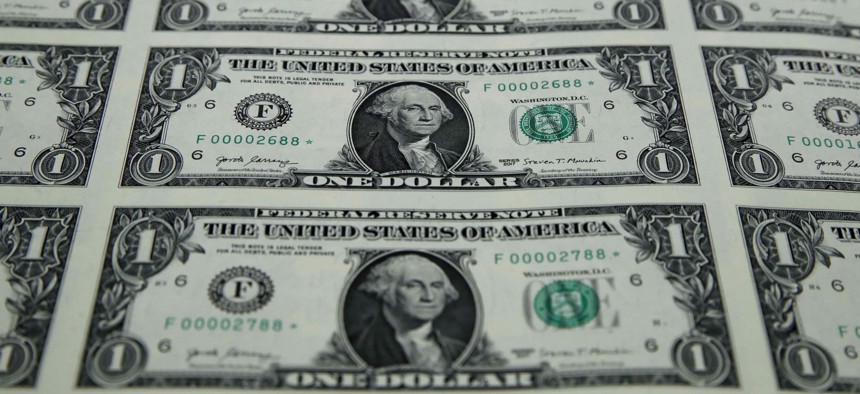The States That Give and Get the Most Federal Dollars

A sheet of new $1 bills on Wednesday, Nov. 15, 2017, at the Bureau of Engraving and Printing in Washington. AP Photo/Jacquelyn Martin

Connecting state and local government leaders
A new analysis identifies states that have sent more money to Washington than they saw in returned federal spending.
Connecticut, Massachusetts, New Jersey and New York are among the places that come out at the bottom of the heap in a new analysis that compares how the money that flows from states to the federal government stacks up against federal spending within each state.
The Rockefeller Institute of Government examined the distribution of federal revenues and spending for each state, and came up with “balance of payments” figures that measure the gap between the two sums overall and on a per-capita basis to control for population size.
Forty states had a positive balance of payments in the 2017 federal fiscal year, according to the analysis, meaning federal spending in those states was greater than the taxes and other revenues sent from the states to the federal government. Ten states had negative balances.
New York had the largest estimated negative balance of overall payments. The money funneled to the federal government from New York, mostly from income and payroll taxes, was $35.6 billion greater in the 2017 federal fiscal year than federal spending in the state.
New Jersey had the second-largest shortfall. Federal collections in the state exceeded federal spending there by $21.3 billion. Massachusetts had the third largest negative gap: $16.1 billion.
When weighing federal receipts against expenditures on a per-person basis, based on the number of people in each state, Connecticut had the widest negative balance of payments, sending an estimated $15,462 per-person to Washington in fiscal 2017, compared to $11,462 in per-capita federal expenditures in the state, for a negative balance of about $4,000.
Other states with the highest, estimated per-capita negative balances in fiscal 2017 included: New Jersey ($2,368), Massachusetts ($2,343), New York ($1,792) and North Dakota ($720).
The national average per-capita balance of payments was positive, at $1,925 per person, the report says.
The main categories of federal receipts that come from each state that were factored into the Rockefeller analysis included individual income taxes, payroll taxes, corporate income taxes and excise taxes—like those on gasoline and tobacco.
Major types of spending the researchers took into account were direct payments for individuals under programs like Social Security and Medicare, federal grants, contracts and other federal procurement, and wages paid to federal employees.
The states with the highest overall estimated positive balance of payments for the 2017 federal fiscal year included: Virginia ($87.2 billion), Florida ($45.8 billion), Kentucky ($40.7 billion), Maryland ($36.5 billion), and North Carolina ($34.4 billion).
On a per-capita basis the states checking in with top positive balances were Virginia ($10,301), Kentucky ($9,145), New Mexico ($8,692), West Virginia ($7,283) and Alaska ($7,048).
The Rockefeller researchers explain that states with larger shares of high earners, like New York, will inevitably see greater sums of personal income taxes flow to the federal coffers.
They also note that the federal tax system targets grants and other spending in poorer states. And that Social Security and Medicare payments are greater in states with large elderly populations.
Another factor that can affect the balances, the researchers point out, is proximity to Washington, D.C., or large federal facilities.
For instance, Virginia’s beefy positive balance is partly attributable to high concentrations of federal employees and contracts. New Mexico, meanwhile, has large government research installations.
The Rockefeller Institute of Government is a nonpartisan public policy think-tank based in Albany, New York.
It conducted the analysis with financial support from Gov. Andrew Cuomo’s budget office. Cuomo, a Democrat, has been an opponent of changes enacted as part of the 2017 Republican tax overhaul that capped federal deductions for certain state and local taxes.
Curbing the deductions that households could claim on their federal income tax returns for these taxes is expected to especially effect taxpayers in higher tax states such as New York.
The governor on Tuesday said top priorities for New York’s congressional delegation should be repealing the state and local tax deduction cap and securing funds for infrastructure projects.
A full copy of the analysis can be found here.
Bill Lucia is a Senior Reporter for Route Fifty and is based in Washington, D.C.

NEXT STORY: City Leader Wants Residents to Try Balancing the Parks and Rec Budget





